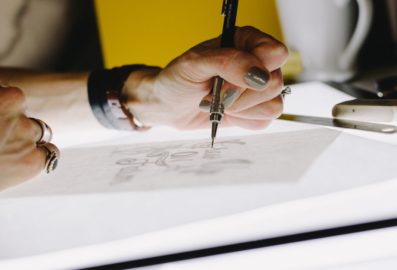
European Union Designs: Route to registration
A design protects the appearance of a product and is intrinsically linked to a…
Franco de Barba
Trademark & Design Attorney at MERX IP
Registered IP Agent
fdebarba@merx-ip.com
An estimated 945,100 industrial design applications containing 1.24 million designs were filed worldwide in 2017, according to WIPO’s annual World Intellectual Property Indicators (WIPI) report.
The report, published on 3 December, reveals that the office of China received applications containing 628,658 designs in 2017. It was followed by the EUIPO (111,021).
Companies are usually confronted with the costs an effective design protection implies. However, it is self-evident that successful products attract challenges and copycats. So protection plans are to be considered from the very beginning, in order to establish effective enforcement plans.
Registered designs are in most of the circumstances the best alternative to develop an efficient and effective designs protection policy. In the European Union, the Registered Designs Regulation was drafted taking into account that situation. In this sense, the “Multiple application” has been created with the aim of allowing design owners to register its designs, at lower costs. Precisely, the official fees are reduced significantly in comparison with traditional one single design applications.
What is a multiple design application?
A multiple application is a request for the registration of more than one design within the same application. Each of the designs contained in a multiple application is examined and dealt with separately, A separate certification of registration is issued for each design filed through the same multiple application. Each design may, separately, be enforced, be licensed, be the subject of a right in rem, a levy of execution or insolvency proceedings, be surrendered, renewed or assigned, be the subject of deferred publication, etc.
The numbers of views are not to be confused with the number of designs. The views show the same design from different perspectives. A maximum of seven different views can be filed in order to represent a design.
However, in a multiple application, each design can be different, so a multiple application can be filed claiming as many designs with a maximum of 7 views each.
Which are the economic advantages of using the Multiple application vs the single application?
Multiple applications are subject to specific registration and publication fees, which decrease in proportion to the number of designs.
Let’s see a comparative example of a company which sought to register five designs of shoe soles:
If the company uses the Single design application, it will have to pay registration and publication official fees of 350 euros per design (professional fees excluded), i.e., 350 x 5 =1750 euros
However, if that company uses the multiple application system, the fees for each additional design will be reduced in a 50%, and even more if more than 10 designs are filed in the same application:
| Concept | Registration + Publication fees |
| First design in a multiple application | 350 euros |
| 2nd to 10th design in a multiple application | 175 euros per design |
| 11th+ design in a multiple application | 80 euros per design |
* Professional fees excluded
So, for 5 designs in a multiple application, total official fees would be 1050 euros. This is significantly lower than the fees to be paid for a traditional single application, and you would obtain the same protection.
Which are the requirements applying to multiple Applications?
The indication of products for the designs contained in a multiple application must be classified in only one of the 32 Locarno classes. The designs may belong to different subclasses, but they must remain in the same class.
For instance, a multiple application is acceptable if it contains one design with the product indication Electric Motocycles (Class 12, subclass 11) and one design with the product indication Vehicle interiors (Class 12, subclass 16), or if both designs indicate both these terms
As an exception, the indication Ornamentation in Class 32-00 can be combined with indications of products belonging to another Locarno class.
All the designs in a multiple application must have the same owner(s), although designers may be different.
All designs in a multiple application are to be filed in the same application. The filing date of all of them must be the same, and the same multiple application is to be used to file all of them. It is not possible to file the designs at separate dates. However, each design in a multiple application may claim different Paris Convention priorities.
If you have any questions or require additional advice, please do not hesitate to contact us.

A design protects the appearance of a product and is intrinsically linked to a…

European Design Legislative Reform: An Overview In November 2022, the European Commission introduced two…

Community Designs have a unitary character, which implies that they have an equal effect…